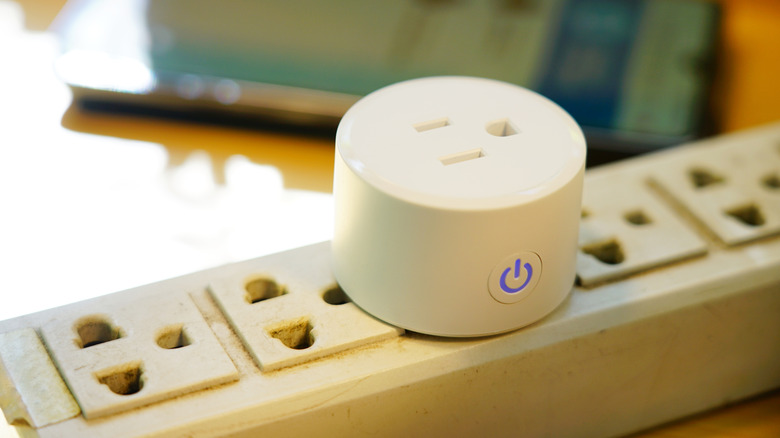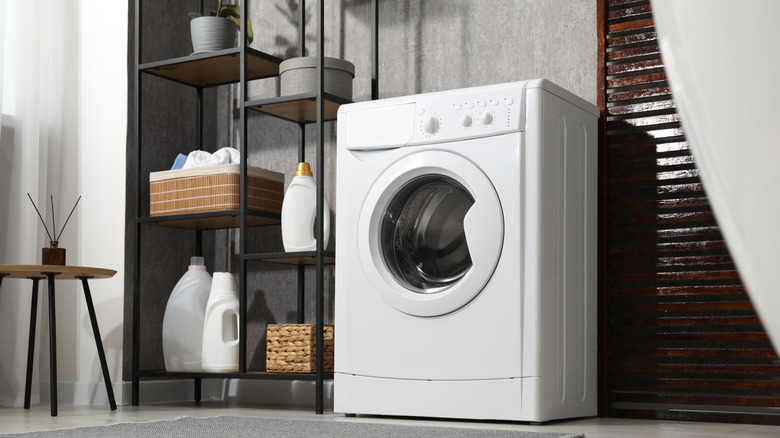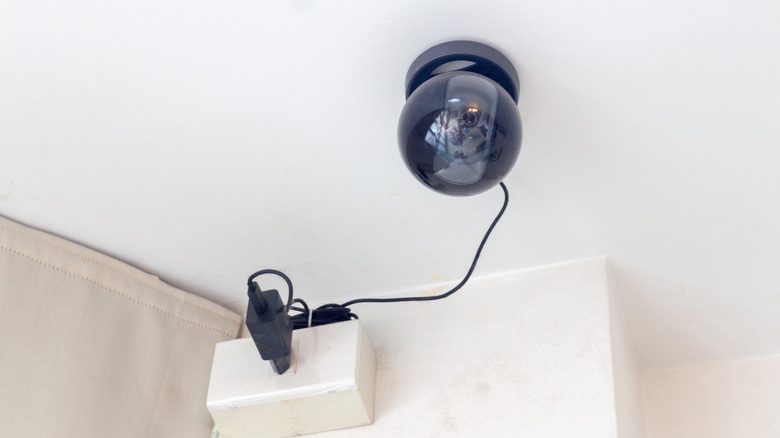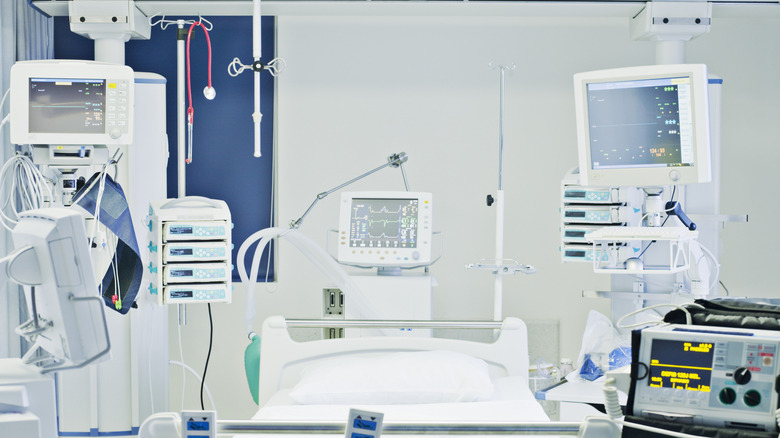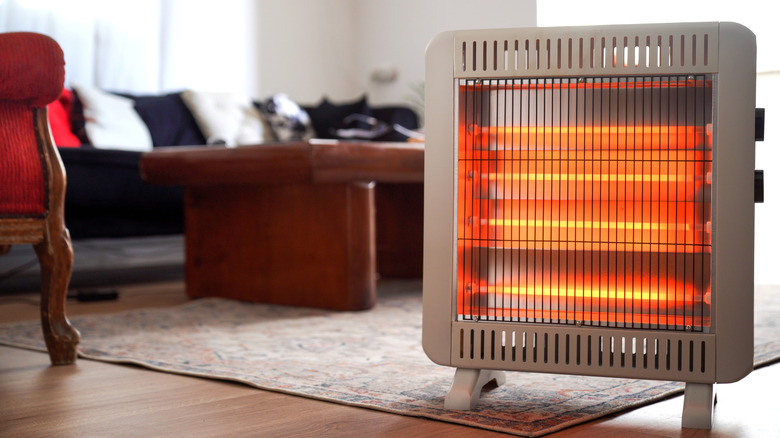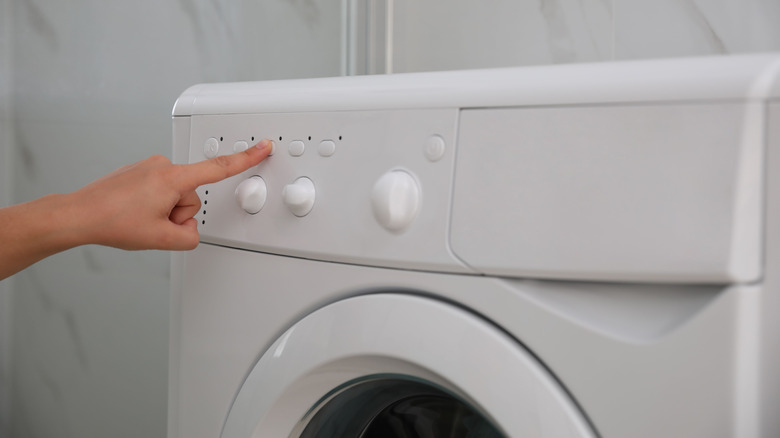Never Plug These 5 Things Into A Smart Plug
We may receive a commission on purchases made from links.
Gone are the days when only your phone was smart. There is a growing number of smart appliances and gadgets that make our lives easier, letting you control them whether you are relaxing in another room or traveling to a different country. The best part about this technology is that you can even convert your dumb home appliances to smart ones using a device called a smart plug. Smart plugs are simple devices that automate wired appliances and make them smarter. The setup is usually effortless, as you need to just plug in your wired appliance to the smart plug, connect to the Wi-Fi, and control the device through its compatible app.
A smart plug gives you complete control over your gadget without needing to get up from your couch. For instance, you can turn off a clothing iron remotely, or schedule your lights to turn off during certain times of the day and thus save electricity. There is a wide range of smart plugs available in the market that you can use in various creative ways, like connecting your water sprinkler to a weather service app and creating a weather-dependent system. Additionally, you can pair your smart home appliances with a smart plug to turn on certain devices at the same time, like an aroma diffuser with your AC.
However, not every device should be connected to a smart plug, because doing so poses major risks and could even be lethal. Here are five things that you should never plug into a smart plug.
High-power appliances
While smart plugs are meant to make any wired appliance smart, there are certain limitations to them. Smart plugs are rated for 10 to 15 amps, and institutions like the Norwegian Directorate for Civil Protection say that "You should therefore not use smart power plugs or extra transitions on products with high power and that are left on for large parts of the day." High-power devices tend to overheat, and smart plugs won't be able to handle that.
Appliances such as washing machines, space heaters, air conditioners, etc., should never be plugged into a smart plug, since those plugs are meant for handling moderate energy loads. Smart plugs are suitable for lamps, fans, coffee makers, humidifiers, etc. Power-hungry appliances demand more power, which most smart plugs aren't designed for. If you really want your high-power appliances with a smart plug, you should ensure you buy a heavy-duty smart plug to handle those gadgets.
Plugging a heavy-duty appliance into a standard smart plug can result in tripping, melting, or even fire. Use smart plugs smartly to avoid the risk entirely.
Security systems
Another thing that you should never connect to a smart plug is the security system. A modern-day security system includes alarms, cameras, motion sensors, fire detection systems, and more. If you connect any of these devices to a smart plug, then you are at a higher risk of serious reliability and safety threats, such as leaving your security system inoperable, going offline, or triggering false alarms. Since security systems require a continuous electric supply, powering them through a smart plug may lead to unnecessary malfunctions, accidental switch-offs, or internet connection issues, as a smart plug is prone to these problems.
Because of this, even if you have the best security system installed, your premises will be left open for ill-intentioned people to breach. Smart plugs are meant to control everyday electronic equipment, but using them for critical machines is not recommended. Also, a security system connected to a smart plug can be targeted by hackers if not properly secured. Anyone can get access to your security system once they have your Wi-Fi or internet connection details. This way, they can disable the entire security system, launch a remote firmware attack, or perform data interception.
Considering their importance, you should always connect a security system with a consistent power source and also back it up with an Uninterrupted Power Supply. This prevents accidental shutdowns and keeps the batteries charged.
Healthcare equipment
It goes without saying that your health is of the utmost importance, and it should never be left to chance. Health equipment and medical gadgets should never be connected to a smart plug under any condition. Medical equipment such as oxygen cylinders, ventilators, blood oxygen, and blood pressure monitors are highly sensitive and require a constant supply of power, since they are important in maintaining the health of a patient. In case one is connected to a smart plug, there are chances of accidental shutdown, voltage malfunction, and power surges, which could have life threatening consequences.
In addition, most consumer-grade and low-cost smart plugs don't go through rigorous safety checks and stand a high chance of failure. They aren't built to handle such precise machines, which, in turn, could damage your devices. Electrical outlets at hospitals are a bit more sophisticated than the ones found in our homes, as they have to be constantly monitored for faults and stable power delivery.
This is why most hospitals have a dedicated electrical outlet for each device or use special power strips. In short, smart plugs don't have the dependability and safety that healthcare technology requires.
Appliances that generate heat
Smart plugs can manage every device. However, you should be cautious while using appliances that produce heat. Appliances such as heaters, toasters, hair dryers, and the AC should not be used with smart plugs, as smart plugs don't come with a regulator. Since these require constant electricity and could exceed the power consumption that the smart plug is capable of, they can overheat, melt, or even cause damage to the device.
Another problem is that, in case your Wi-Fi signal drops or there is a fluctuation, the smart plug can misbehave and keep the heating device turned on for longer than expected, increasing the risk of fire or other major accidents. In fact, Amazon's smart plug's safety guidelines strictly advise against using them with devices where accidental cutoff can be dangerous. It is recommended that you connect heating appliances directly to a wall socket to protect against unstable temperature control and malfunctions.
You should only use low-power electronics such as lamps or chargers with smart plugs. Additionally, there are several modern heaters, air conditioners, and ovens that come with built-in Wi-Fi and other automation features that are totally safe. Since those are designed for remote operation, they tolerate power cycles and fluctuations, and can handle connectivity issues without being damaged. Automation is great, but it should be done responsibly and with the devices they are built to handle.
Devices with manual settings
As smart home technology is growing in popularity, experts are sharing their views and warning consumers to never plug in devices with manual settings. Smart plugs default to the "off" state after a power failure. This means that after the power comes back on, while the smart plug may resume power delivery, the appliance may remain off. While smart plugs are great for adding automation and remotely controlling suitable appliances and gadgets, they are limited in functionality. Appliances with mechanical switches and manual controls aren't good for smart plugs, because this tool only controls power delivery and doesn't turn the device on or off or activate its internal functions.
Basically, you cannot just automate any device with a smart plug, especially the ones that require you to push a button after the power. For example, a washing machine might suddenly resume a wash cycle midway after a power outage, when restarted using a smart plug, resulting in a malfunction. To safely automate devices and do more than just turn them on or off, you should consider upgrading to one that offers built-in Wi-Fi, app control, and voice support.
Overall, a smart device should be used with gadgets that come with a simple on/off function, such as a kettle or a light bulb. Using them with a more complex device only makes the situation harder to handle, defeating the purpose of automation.
